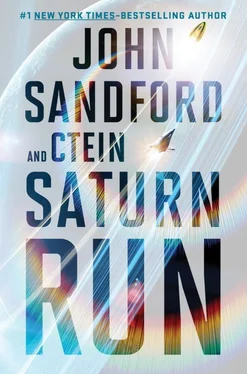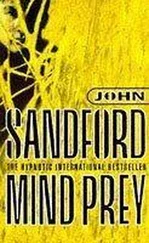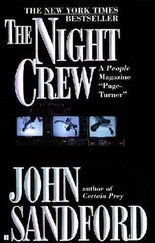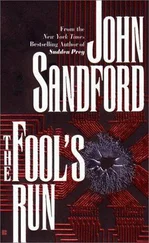“Shut up,” Duan said.
Possibly the moonlet was inhabited, by very quiet, intelligent, alien rodents. But probably not. The consensus was that this was not going to be the day for First Contact with another species.
The seismologist determined that the shell of the moonlet was quite thin. The geologists were equipped with drills and even small mining charges.
“Do we crack the shell?” Chang asked.
Duan shook her head: “No. The instructions are quite clear. Nothing that could be interpreted as an attack. We should see to the ants.”
____
At the planetoid, Cui had gone out through the air lock to call Zhang and the bridge crew.
“The I/O connection is fine. We can hook right in and start the I/O feed back to the Odyssey . The question is, should we do that, or should we fabricate our own equipment? Ours is better—not faster, but more robust. And I worry that the Americans may have done something to the cables. Is it possible to insert something into the cables that would turn the I/O output to garbage, or noise, or add error somehow?”
“Yes, that would be possible,” said one of the Odyssey -based techs. “But we would see that almost instantly. I would suggest you get the specs for fabricating our own I/O, but also, begin transmitting through the American connection. We could transmit to a sequestered computer to make sure that the input is not contaminated.”
____
On the moonlet, Duan took a call from one of the team members designated as an explorer. One of the ants was sitting on the surface of the moonlet, attached to one of the hamster-sized ports. The machine was less than a kilometer away.
After signaling to the Celestial Odyssey what they were about to do, they moved the shuttle to the site discovered by the explorer. Duan took a message from Zhang: “The Americans are coming over the horizon. You won’t be visible to them for another hour, because of the rings, but then they will be able to see you, if they look at the right place. So, either hurry, or hide.”
Duan signaled, “We will hurry first and hide later.”
____
At the planetoid, Cui asked, “How long will it take to transmit data at the current output rate of both science and technological information?”
The jukebox—now renamed the Narcissus, for the flower held in Chinese folklore to represent the intellect—said, “At the previous I/O rate, approximately two hundred and twelve Earth years, one hundred and six Earth days, seven Earth hours, sixteen Earth minutes, and 24.5 Earth seconds.”
Cui and Wong looked at each other. “Narcy… uh, how much did you give to the other humans?”
“All of it.”
“All of it? Why would it take us two hundred years to get it, if they got all of it in a week?”
“The first group of humans also received memory modules containing the most detailed technological and manufacturing information, which is the bulk of the information. The fundamental science information only was transmitted on the I/O link.”
“Then we also want memory modules.”
“Only eight physical memory modules and eight physical module readers are allotted per species. More cannot be fabricated on this facility, which is designed for storage, rather than the manufacture of consumer goods. The first group of humans took all eight.”
“What?”
____
On the moonlet: the ant—the alien artifact, whatever it was—more closely resembled a crab than a worker ant, with a flattened, domed fuselage and multiple mechanical appendages that extended from its midsection. None of the appendages could be interpreted as a weapon. They were all tipped with grapples, manipulators, or sockets, presumably for interchangeable attachments like tools. Nothing that would fire a projectile or a bolt or beam of energy, nothing that even looked capable of delivering a shock.
Duan signaled back to Zhang: “It’s some kind of drone, we think. No visible defensive or offensive capability.”
“How big?”
“A meter and a half long. Appears to be inactive. We’ve probed it with every nondestructive tool we’ve got—millimeter waves, soft X-ray, active sonar and passive sound detecting equipment. There’s a little hum, but not much.”
“Could you, uh, pick it up?”
“We’ll try.”
They tried, but the artifact was immovable. A docking collar locked the fuselage to the port that went into the moonlet. The tips of several appendages were firmly embedded in complementary fixtures arrayed about the port.
“That isn’t going to work,” Duan called. “We need to talk here.”
“Americans are almost around.”
At Duan’s direction, the crew tried to pry the appendages loose and rotate the docking collar, but got no movement with the degree of force the mechanics were willing to risk. The only response of the automaton was that faint internal hum increased when stress was put on the appendages.
They considered the option of cutting it free. Their cutting torches ought to be up to the task. But was it a good idea?
As an option, it was the last resort. They had no way of knowing how much damage they would do to the automaton by cutting away pieces of it, especially powered components, as the hum suggested they were. They might end up with a dead and dismembered spacecraft, pieces of alien space junk. How much could they learn about the technology from an entirely nonfunctional device?
Before going the meat-cleaver route, they opted for precision surgery. The docking mechanisms were active devices. If they could shut down the ant, they might be able to decouple it from the moonlet. The scientists and technicians now had 3-D models of the innards of the spacecraft, the fruits of the multispectral scans. A lot of what was in there was unidentifiable or incomprehensible. Just what was that thing near the bottom front that looked like a kidney?
A lot, though, was recognizable. Conduits and cables look much the same no matter who built them. They could see lumps that they could tell must function as motors or actuators, odd as they looked, just from where they were and what they were attached to.
There were a handful of larger modules. Those had to include fuel and storage tanks, computing and data-handling functions, and a power source. Assuming, of course, that alien engineering design followed anything remotely like human engineering principles. It was a large assumption, but they’d been able to recognize conduits and cables and motors, so it couldn’t be all that different.
There had to be signals to the motors telling them what to do and power so that they could do it. The electrical engineers started tracing conduits back from the motors. One by one they eliminated modules from consideration, as the scientists peered anxiously over the engineers’ shoulders and kept checking the time. They worked it down to two candidates. One was likely the computing unit, the other the main power supply. The one with the larger cables? Probably power.
They might be wrong, but disconnecting either ought to shut down the spacecraft. They had twenty-five minutes to do one or the other before the Americans would be looking over their shoulders. Rebooting the artifact might be tricky, or impossible, but at least they’d have an intact machine.
“Cut the power supply,” Duan said. There wasn’t time to consult with Zhang on the decision.
The engineers worked rapidly, calling out for tools and instruments that were delivered to them instantly by the surrounding team. Like field surgeons, they contemplated their alien patient. They were down to eighteen minutes to complete the operation. They decided where to make the first incision.
Читать дальше








